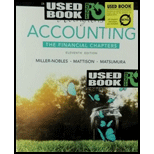
Concept explainers
Concept Introduction:
Forms of organizational structures of Businesses
• Several options exist for creation of new entities such as
• For instance, when the objective is to form a joint venture for a short duration, a partnership firm is the most appropriate since it allows for quick distribution of
• Similarly, opting for the corporate structure of organization of business comes with its own set of merits and demerits. Some of the advantages include perpetual continuity, separation of ownership from management, distinction of personal and business assets and liabilities etc.
Classes of shares:
• Shares provide partial ownership or a “share” of a corporation. There are two primary classes of shares – Equity Shares and
• Equity shares are the class of shares which carry voting rights and equity share holders are the true owners of the company as in the event of dissolution, equity shareholders get last preference in clearing the amounts invested and there is no guarantee of profits / dividend on an annual basis.
• Preference shares are the class of shares which do not carry voting rights and in the event of dissolution, preference shareholders get first preference in clearing the amounts invested and there is usually guarantee of profits / dividend on an annual basis. Convertible Preference shares are preference shares that carry the option to be converted into equity shares after certain duration.
Calculation of Shares to be issued
• Shares provide partial ownership or a “share” of a corporation. There are two primary classes of shares – Equity Shares and Preference Shares.
• Equity shares are the class of shares which carry voting rights and equity share holders are the true owners of the company as in the event of dissolution, equity shareholders get last preference in clearing the amounts invested and there is no guarantee of profits / dividend on an annual basis.
• In the event that the capital to be issued is decided, the number of shares to be issued is calculated as the capital to be raised divided by the issue price of the equity shares.
Requirement 1
Main advantage of corporate structure of ownership
Requirement 2
Which class of shares should be issued.
Requirement 3
To Calculate:
Number of shares to be issued.
Want to see the full answer?
Check out a sample textbook solution
Chapter 13 Solutions
Horngren's Accounting, The Financial Chapters (11th Edition) - Standalone Book
- Accounting problemarrow_forwardTrent Manufacturing Company produces and sells 95,000 units of a single product. Variable costs total $285,000 and fixed costs total $390,000. If each unit is sold for $11, what markup percentage is the company using?arrow_forwardWhat is the company's overhead application ratearrow_forward
- Answerarrow_forwardI am trying to find the accurate solution to this general accounting problem with appropriate explanations.arrow_forwardDavis Company reported an increase of $350,000 in its accounts receivable during the year 2023. The company's statement of cash flows for 2023 reported $980,000 of cash received from customers. What amount of net sales must Davis have recorded in 2023?arrow_forward

 AccountingAccountingISBN:9781337272094Author:WARREN, Carl S., Reeve, James M., Duchac, Jonathan E.Publisher:Cengage Learning,
AccountingAccountingISBN:9781337272094Author:WARREN, Carl S., Reeve, James M., Duchac, Jonathan E.Publisher:Cengage Learning, Accounting Information SystemsAccountingISBN:9781337619202Author:Hall, James A.Publisher:Cengage Learning,
Accounting Information SystemsAccountingISBN:9781337619202Author:Hall, James A.Publisher:Cengage Learning, Horngren's Cost Accounting: A Managerial Emphasis...AccountingISBN:9780134475585Author:Srikant M. Datar, Madhav V. RajanPublisher:PEARSON
Horngren's Cost Accounting: A Managerial Emphasis...AccountingISBN:9780134475585Author:Srikant M. Datar, Madhav V. RajanPublisher:PEARSON Intermediate AccountingAccountingISBN:9781259722660Author:J. David Spiceland, Mark W. Nelson, Wayne M ThomasPublisher:McGraw-Hill Education
Intermediate AccountingAccountingISBN:9781259722660Author:J. David Spiceland, Mark W. Nelson, Wayne M ThomasPublisher:McGraw-Hill Education Financial and Managerial AccountingAccountingISBN:9781259726705Author:John J Wild, Ken W. Shaw, Barbara Chiappetta Fundamental Accounting PrinciplesPublisher:McGraw-Hill Education
Financial and Managerial AccountingAccountingISBN:9781259726705Author:John J Wild, Ken W. Shaw, Barbara Chiappetta Fundamental Accounting PrinciplesPublisher:McGraw-Hill Education





